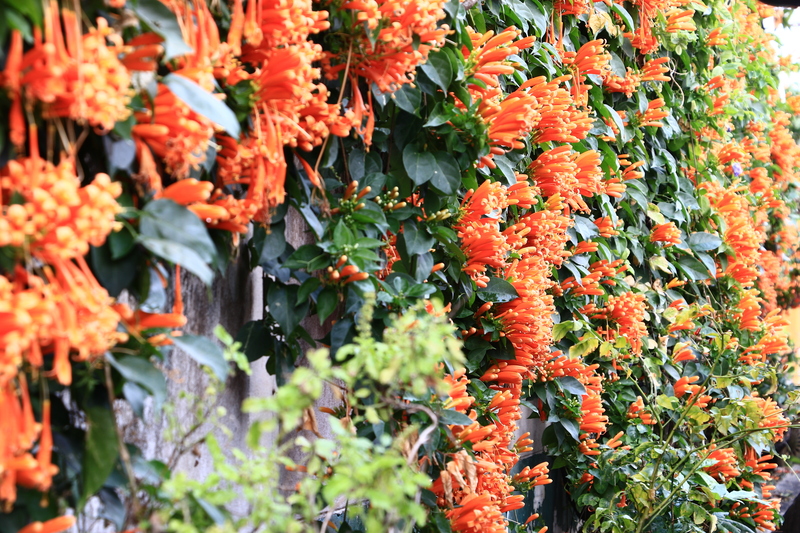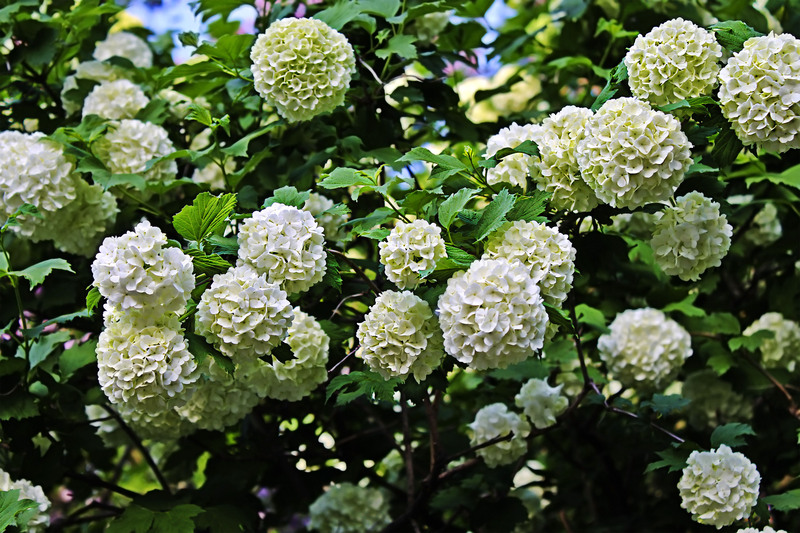Starting Your Herbal Haven: Growing a Herb Garden
Posted on 24/08/2025
Starting Your Herbal Haven: Growing a Herb Garden
If you've ever dreamt of stepping outside to pluck fresh basil for your pasta or snip mint leaves for a cup of soothing tea, growing a herb garden is the perfect venture for you. Embarking on your own herbal haven not only enhances your cooking and wellbeing, but also beautifies your space and connects you with nature. This comprehensive guide will walk you through every step of creating your flourishing herb garden--whether you have a sprawling backyard or just a sunny windowsill.

Why Grow Your Own Herb Garden?
Creating a personal herb garden offers numerous benefits, both practical and personal:
- Access to fresh, organic herbs for culinary, medicinal, and aromatic uses
- Cost savings on store-bought herbs
- Improved health through antioxidant-rich plants and natural remedies
- Enhanced flavor and nutrition in your meals
- An attractive and fragrant addition to your home or garden
- Sustainable living by reducing packaging and waste
- Stress-relieving hobby that fosters mindfulness and relaxation
No matter your motivation, starting your herbal sanctuary is a rewarding and accessible project for gardeners of all levels.
Choosing the Perfect Spot for Your Herb Haven
Indoor vs. Outdoor Herb Gardens
Your herb garden can thrive both indoors or outdoors, depending on your space and climate. Here's how to decide:
- Indoor Herb Gardens: Ideal for apartment dwellers or those with limited yard space. Place on a sunny windowsill, balcony, or under grow lights.
- Outdoor Herb Gardens: Best for those with garden beds, patios, or raised planters. Outdoor herbs often grow more vigorously and need less attention than indoor herbs.
Pro tip: You can even blend the two approaches by starting your herbs indoors, then moving them outside during warm weather.
Sunlight, Soil, & Drainage: The Golden Rules
- Sunlight: Most herbs love sunlight! Aim for at least 6 hours of direct sunlight per day. South-facing windows or garden areas are ideal.
- Soil: Choose well-draining, loose, nutrient-rich soil. Many herbs prefer slightly alkaline to neutral pH (6.0 to 7.5).
- Drainage: Ensure excellent drainage using pots with holes, raised beds, or sandy garden soils. Herbs do not like "wet feet."
Good light, healthy soil, and proper drainage are vital for a thriving herb garden.
Planning Your Herb Garden: What to Grow
Best Herbs for Beginner Gardeners
When starting your herbal haven, success comes with choosing easy-to-grow herbs. Consider these tried-and-true favorites:
- Basil: Perfect for Italian dishes and easy to grow from seed.
- Mint: Vigorous and refreshing--give it a pot to contain its spread.
- Parsley: Biennial but often grown as an annual. Great for both garnishing and cooking.
- Thyme: Hardy, drought-tolerant, and aromatic.
- Rosemary: Loves sun and well-drained soil. Excellent for roasted dishes and bread.
- Chives: Mild onion flavor, perennial, and attractive purple flowers.
- Cilantro (Coriander): Fast-growing, essential in many cuisines.
- Sage: Tasty in stuffing and meat dishes. Silvery foliage is beautiful and fragrant.
- Dill: Lovely in salads, pickling, and as a pollinator attractor.
- Oregano: Mediterranean staple, thrives in sunny, dry spots.
Herbal Themes: Choose Your Own Adventure
- Culinary Herb Garden: Grow kitchen staples like basil, oregano, thyme, sage, and parsley for endless recipes.
- Medicinal Herb Garden: Consider chamomile (soothing tea), lemon balm, echinacea, lavender, and calendula.
- Tea Garden: Plant mint, chamomile, lemon balm, rosemary, and hibiscus for fresh herbal infusions.
- Potted Herb Garden: Use attractive containers for patios, balconies, and indoor spaces.
*Remember: Pick herbs you'll use and enjoy!
How to Start Your Herb Garden: Step-by-Step
Step 1: Select Your Containers or Beds
- Containers: Pots, window boxes, or planters with drainage holes. Good for controlling soil and moisture.
- Raised Beds: Excellent for grouping herbs together. Fill with quality soil mix.
- Garden Beds: Prepare by loosening soil and improving drainage if needed.
*Tip: Make sure each herb has enough elbow room! Some herbs, like mint, can overwhelm others--plant them individually.
Step 2: Soil Preparation
- Use a high-quality potting mix for containers; amend garden soil with compost for nutrients and drainage.
- Check pH: Most herbs thrive in moderately neutral soils. Test and adjust if necessary.
Step 3: Planting Seeds or Transplants
- Seeds: Ideal for basil, dill, cilantro, and parsley. Sow according to packet instructions--usually, a light cover of soil works best.
- Transplants: Many herbs (like rosemary, thyme, oregano) are easier to start from nursery plants. Gently loosen roots before planting.
Space plants according to their mature size--to prevent overcrowding and encourage air flow.
Step 4: Watering & Maintenance
- Water thoroughly when soil feels dry an inch below the surface.
- Do not overwater: Herbs are more tolerant of dryness than soggy roots.
- Mulch: A thin layer of straw, gravel, or compost keeps soil moist and discourages weeds.
Observe your herbs closely--droopy leaves often mean under- or over-watering.
Step 5: Fertilize Sparingly
- Light feeding with organic fertilizer during the growing season keeps herbs healthy.
- Too much fertilizer can reduce flavor intensity. Less is more for herbs!
Indoor Herb Garden Tips
- Rotate pots weekly so all sides get sunlight.
- Use lightweight, well-draining potting mixes.
- Add a grow light if natural light is limited (aim for 12-16 hours daily).
- Control indoor humidity (a small tray of water or misting can help in dry climates).
- Prune regularly: Cutting encourages bushier growth.
How to Harvest Your Herbs
Best Practices for Picking Herbs
- Harvest young leaves for the best flavor (before the herb flowers).
- Pinch off stems above a set of leaves to promote branching and continual growth.
- Never remove more than 1/3 of a plant at once.
Herbs like basil, mint, and oregano benefit from frequent pinching.
Drying and Storing Herbs
- Hang bunches upside down in a dry, airy location. Or, dry leaves on trays away from direct sunlight.
- Store dried herbs in airtight containers away from heat and light for best flavor.
- Freeze chopped fresh herbs in olive oil in ice cube trays for instant flavor boosts.
Common Herbs and Their Uses
- Basil: Salads, pesto, pizza
- Mint: Teas, desserts, mojitos
- Rosemary: Roasts, potatoes, bread
- Thyme: Soups, stews, poultry
- Parsley: Garnish, sauces, tabbouleh
- Cilantro: Salsas, stir-fries, curries
- Dill: Pickles, fish, dips
- Sage: Stuffings, sausages
Herbal Troubleshooting: Common Problems & Solutions
- Yellowing Leaves: Often too much water. Review your drainage!
- Pale, Spindly Plants: Not enough sunlight. Move to a sunnier spot or add a grow light.
- Powdery Mildew: Improper air circulation. Thin plants and avoid wetting foliage.
- Pests: Hand-pick, rinse, or use natural solutions like neem oil for aphids and mites.
Tips for a Beautiful and Productive Herb Garden
- Combine textures and heights for visual appeal.
- Use decorative pots or raised beds to enhance your aesthetic.
- Label your herbs--especially when starting out!
- Mix annuals and perennials for a garden that thrives year-round.
- Invite pollinators by growing flowering herbs like thyme and chives.
FAQ: Popular Questions About Growing a Herb Garden
Can I grow herbs in the shade?
Some herbs like mint, parsley, and chives tolerate partial shade, but most thrive best with ample sun.
How often should I water my herb garden?
Water when the top inch of soil feels dry. Potted herbs may require more frequent watering than those in the ground.
When is the best time to start growing herbs?
Start seeds indoors in late winter or sow/transplant outdoors after your last frost. Indoors, you can start herb gardening any time of year!
Can herbs survive winter?
Perennial herbs like rosemary, chives, thyme, and sage can overwinter in the ground in milder climates or be brought indoors in pots.

Conclusion: Start Your Herbal Haven Today
Growing your own herb garden is a delightful way to bring fresh flavors, natural beauty, and wellness into your life. With a few simple steps, the right herbs, and mindful care, your herbal haven will soon thrive--providing endless enjoyment in your kitchen and home.
So roll up your sleeves, pick your favorite herbs, and get growing--your herbal sanctuary awaits!

